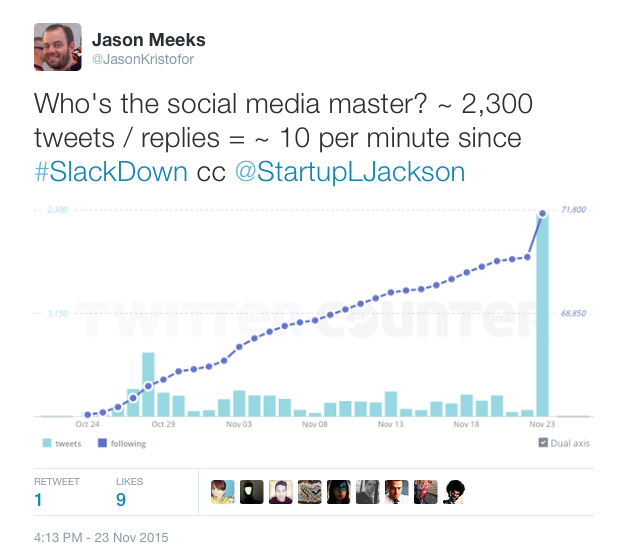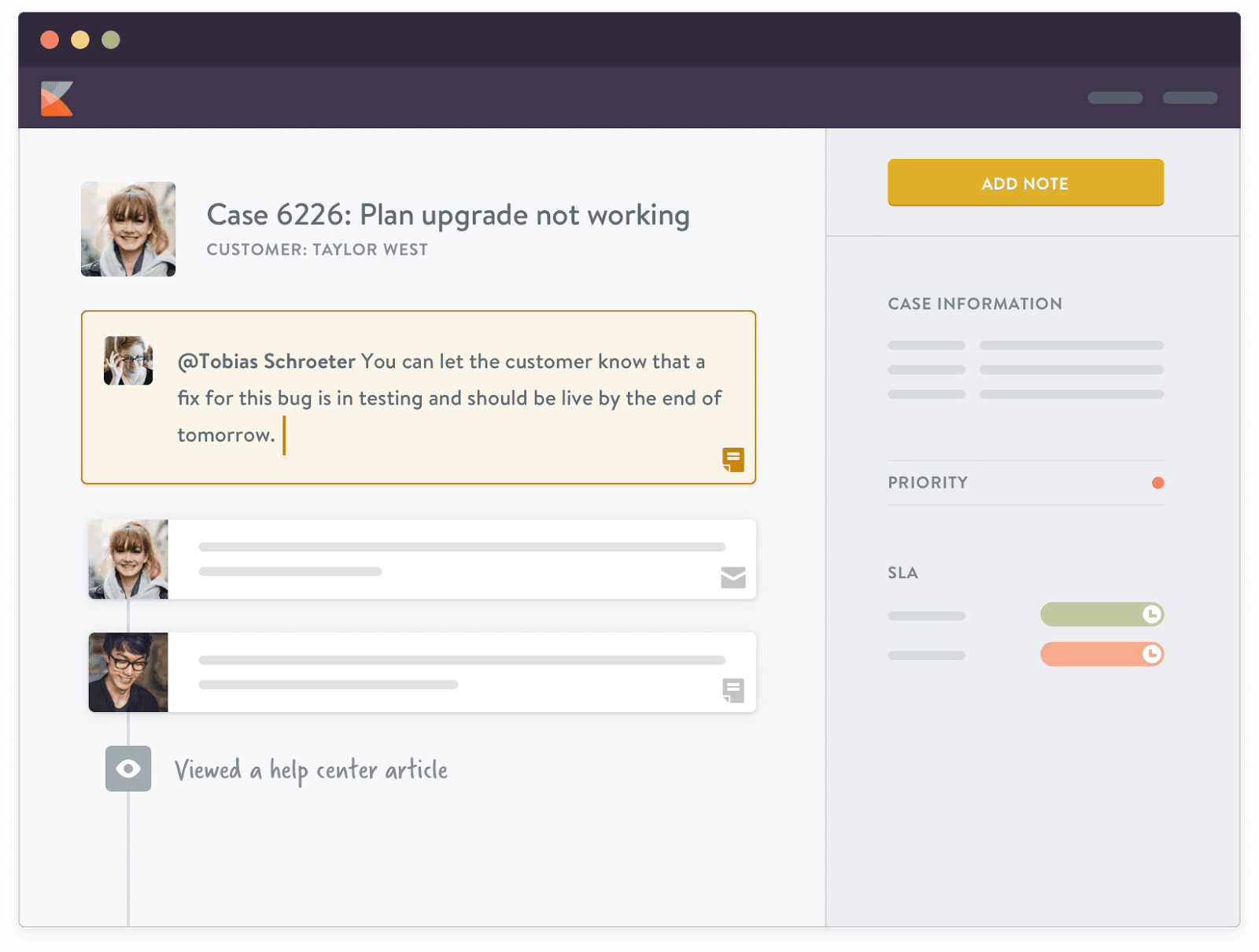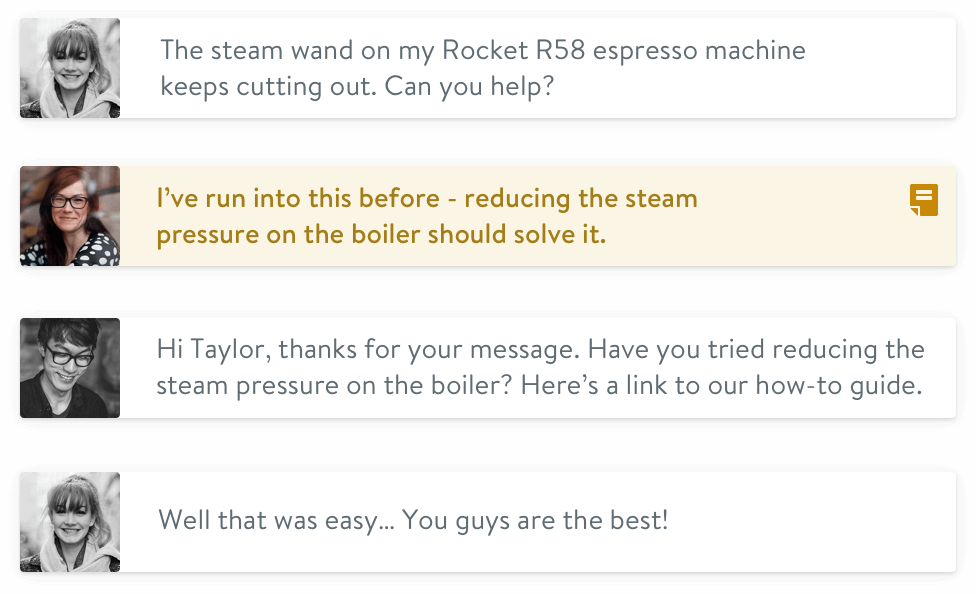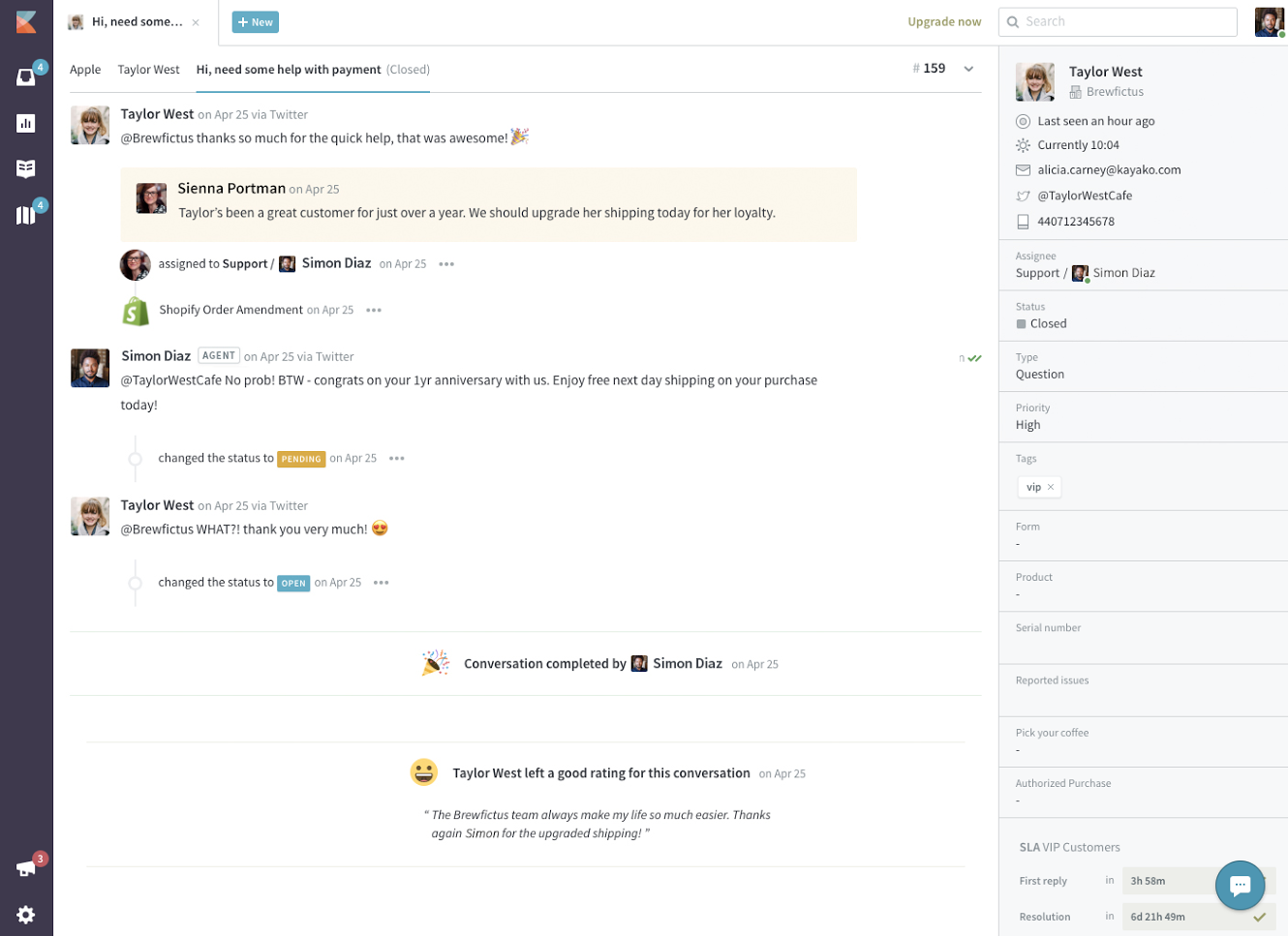All hands support has been a buzzword in the tech world for a few years now. Its premise—that everyone in the company from the CEO down to developers—spends time working as customer support agents, talking to customers, and answering questions.
It’s a great practice in theory, and hypothetically will make everyone at a company more empathetic and customer-driven.
But the reality is, all hands support rarely works. Here’s why.
Why is all hands support so popular?
All hands support is being used by a number of tech companies, but has been made popular by the customer-centric application integration software Zapier, which is vocal about how everyone in the company works on support for a portion of their day/week/month.
Zapier has found that by making everyone a member of the support team, the company delivers better customer experience and service.
Zapier have an engineer directly answer questions. This means faster answers on the first try, rather than back-and-forth between the support agent and the engineer. And, the company says that those engineers tend to fix problems quickly when they get the same question over and over.
Plus, Zapier and other places who use all hands support say it saves them money and time in addition to company culture benefits (support finally gets the respect it deserves, and everyone starts to see the product through the eyes of the customer).
How it plays out in the real world
One popular example people point to when they talk about all hands support is Slack’s 2015 outage, when some 1 million people were without the chat platform.
On Twitter, people quickly began to notice that Slack was engaging with customers at a superhuman pace (2,300 tweets and replies every 10 minutes).

It turned out that Slack had a plan in place for this end-of-the-world situation: Every member of the team would take to Twitter to send sincere replies to users upset about the outage. This plan was personal and worked because everyone knew what to do.
It seemed like a big win for all hands support. But it wasn’t really. The Slack team wasn’t working on complex tickets or providing detailed help. They were just executing an all hands social media strategy.
All hands support can decrease customer satisfaction
That didn’t stop tech companies from thinking that Slack’s all hands approach was the new way to handle a system outage—and trying it unsuccessfully.
E-commerce website Big Cartel experimented with a few iterations of all hands support, only to find that while developers gained newfound respect for support teams, the company’s customer satisfaction score took a big hit.
In many cases, satisfaction dropped because the developer/marketer/engineer answering customer questions lacked the communication skills, empathy, sense of humor, and patience that companies like Big Cartel look for in support team members.
In an all hands support model, companies take a risk in allowing anyone to talk to users—one that can lead to customers receiving short, terse responses and insufficient explanation and instruction. Your support team represents your company to customers. You should want to make the best impression possible.
All hands support is not the real answer
So why doesn’t all hands support really work? For starters, all hands support works on the premise that anyone can do something as easy as give great support.
But those who care about support know that customer service takes a certain kind of personality and skill set—one that emphasizes empathy, patience, creative problem solving, and more.
Expecting everyone on your team to suddenly be comfortable talking to angry and upset customers on the phone or keep track of dozens of cases at a time is misguided. Expecting everyone to do these tasks regularly—when they don’t thrive on this kind of customer-facing work—will simply drain your team’s energies. In the end, the all hands approach lowers the quality of your service and limits your hiring abilities.
One of the reasons all hands support fails, too, is because companies often don’t invest in proper training for everyone (again, diminishing the value of dedicated support teams by thinking anyone with a computer can do it). And when they do pay for training for everyone, it’s expensive and time-consuming.
Collaboration is key
Certainly no company wants its support to be siloed from the rest of the teams in the company—the opposite of an all hands approach. So what is the solution? Collaboration.
This doesn’t mean that everyone works on support. It means that support is respected as a profit-center in your company—as it should be, since support teams are usually the only people interacting with customers post-purchase.
It also means that other teams believe that information from support in the form of customer feedback, bug reports, and product requests can actually help engineers, developers, managers, marketers, and improve their products and work more efficiently.
In the end, through collaboration, customers receive more efficient and accurate answers to their questions.
How to encourage collaboration
We built this theory into Kayako, via collaborators. Making, say, an engineer a collaborator means he/she can provide information to support reps without directly speaking to customers.

Great customer service happens when teams work together. Collaborators can leave internal notes, work on conversations, and draft help center articles, while your team handle the customer conversation.

Stop customer frustration and banish the back-and-forth
Cutting down on endless email chains, chats, and phone calls is a win for both customers and support teams.
Any step closer to a frictionless experience—where customers get their answer in one try instead of say, searching for a number, calling the number, navigating an automated system, jumping from department to department to get to the right person—will improve your customer satisfaction metrics by reducing frustration.
If your customers don’t have to navigate a support system to get help, they’ll reward you with repeat visits and loyalty.
For support teams, eliminating back-and-forth translates to more efficiency and productivity.
You can simply help more customers when giving assistance requires less effort. In Kayako, the notes function makes it so internal conversations stay in one place, rather than across disjointed emails, calls and Slacks. Looking at the customer journey in Kayako, support teams can see all previous communication with the customer, as well as internal notes.

This way, support staff don’t have to ask the customer to repeat their question or problem multiple times. Cutting down on back-and-forth gets you one step closer to a frictionless CX.
How will you collaborate across the business?
The right customer service software makes collaboration a lot easier, but other strategies can help encourage a culture of collaboration too:
- Have everyone designate a portion of their day to share information and answer questions from your support team, and then get back to work on their own projects.
- Emphasize the importance of support from the top down. Customer service teams shouldn’t be the ones making the case for why they’re drivers of profit and loyalty.
- Encourage everyone to take customer feedback seriously.
- Keep everyone’s support involvement at a reasonable level to avoid burnout.
Businesses that work together, succeed together
An all hands support approach may sound like the ideal way to handle customer service. In theory, it makes everyone understand the importance of support and connects customers directly to the people who can best answer questions. But in practice, it hurts your customer satisfaction, limits who you can hire, and strains your budget.
What works is collaboration. By letting your support teams deliver fantastic support with the help from the rest of the company, everyone wins.
Remove the distance between your team and customers with Kayako Collaborators. Try Kayako’s Collaborators on a free 14 day trial and start your journey to better collaboration today!